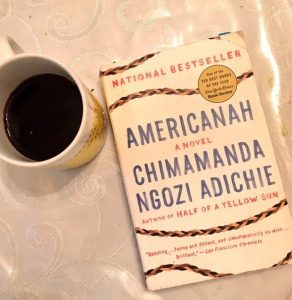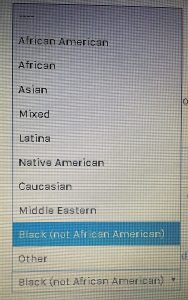Registration season is once again upon us at Washington and Lee.
As a senior, this latest round of signing up for winter-term courses has never gone more smoothly. As a French major who has somehow managed to fulfill all of her degree requirements with time to spare, I’ve actually been able to look into classes that I could take for fun—while I write a 50-page honors thesis in French, that is. As a creative writing minor who is one category away from completion of the track, I have first pick among many interesting English classes that would satisfy this final requirement. But as a black woman at a predominantly white institution, and a student who also frequents departments where both of these minority identities are even more noticeable, registration is difficult. It’s a constant reminder that for many courses, the ‘classic’ topics seem to take priority over more their more ‘diverse’ counterparts—even when a class could potentially be taught both ways.
 For example, I’d taken enough English classes that I considered picking it up as a major during my sophomore year. I was excited to try my hand at comparative literature Since there is so much potential to discuss and examine minority works throughout the Americas, I aimed to complement French literature with American literature. The department offers several American Lit classes every semester, so my hopes were high every time registration came around. However, based on the descriptions that I saw, it always seemed that there would not be much diversity of subject matter. Sadly, this year was no different.
For example, I’d taken enough English classes that I considered picking it up as a major during my sophomore year. I was excited to try my hand at comparative literature Since there is so much potential to discuss and examine minority works throughout the Americas, I aimed to complement French literature with American literature. The department offers several American Lit classes every semester, so my hopes were high every time registration came around. However, based on the descriptions that I saw, it always seemed that there would not be much diversity of subject matter. Sadly, this year was no different.
Consider this excerpt of a description for an upcoming class on the American Short Story:
“This course is a study of the evolution of the short story in America from its roots, both domestic (Poe, Irving, Hawthorne, Melville) and international (Gogol, Chekhov, Maupassant), tracing the main branches of its development in the 20th century…we focus our attention on the work of two American masters of the form…, Hemingway and Fitzgerald. We examine how they were influenced by their predecessors and by each other and how each helped to shape the genre.”
To be fair, I had a slightly different definition of the term “American” when I first happened upon this course title in the catalog; I initially thought it would include works from all of the Americas. It is also a bit odd to see a list of mostly Northern writers and to still label the topic as “American.” I realize that this might be a specialty topic chosen by the professor, hence the focus on Hemingway and Fitzgerald.
I was definitely taken aback by the selection of writers that are actually listed in the description. Why? Because none of the aforementioned writers are female, people of color, or both—yet both minority groups were vital to the establishment and development of the American short story in the 20th century. I can only wonder if other key writers, such as Zora Neale Hurston, Flannery O’Connor, Ralph Ellison, Eudora Welty, Toni Bambara, or Ernest Gaines, might still be discussed.
I know that a small blurb does not outline an entire course, but this recurring registration issue highlights a bigger problem. First-years and non-English majors may not be familiar with a lot of popular writers, so they can’t exactly anticipate the ones a professor might teach. For them, a course description like this one is probably all of the information they will get, unless they formally request a syllabus.
But if a woman, a person of color, or a woman of color happens to be considering this particular American Literature course, then a description that essentially credits the creation and mastery of the American short story to Northern and European white men is problematic.
Personally, I was left to wonder if I would have to sacrifice my own diverse interests yet again. Then I started obsessing over potential ways to “fix” my experience in a course in which I wasn’t even enrolled:
“That can’t be all of the writers we would study, right?”
“Okay, but focusing on Hemingway means the professor would have to mention Gertrude Stein, so technically a woman writer is still in the curriculum. Right?”
“Would it be inappropriate for me to request a lesson or two on a writer of color?”
I know it seems silly that so much uncertainty could stem from a few lines in the course description, but those few lines were enough. This is only one blip in the hunt for curricular diversity that I (and students like me) often experience. I’ve found that I have to hope for diverse subject matter, and then I try to justify the lack thereof if it’s not delivered. I shouldn’t have to go into a class with my fingers crossed.


